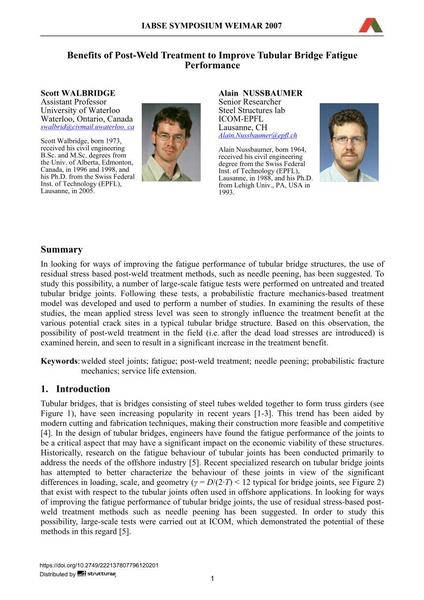Benefits of post-weld treatment to improve tubular bridge fatigue performance

|
|
|||||||||||
Bibliografische Angaben
| Autor(en): |
Scott Walbridge
Alain Nussbaumer |
||||
|---|---|---|---|---|---|
| Medium: | Tagungsbeitrag | ||||
| Sprache(n): | Englisch | ||||
| Tagung: | IABSE Symposium: Improving Infrastructure Worldwide, Weimar, Germany, 19-21 September 2007 | ||||
| Veröffentlicht in: | IABSE Symposium Weimar 2007 | ||||
|
|||||
| Seite(n): | 180-181 | ||||
| Anzahl der Seiten (im PDF): | 8 | ||||
| Jahr: | 2007 | ||||
| DOI: | 10.2749/222137807796120201 | ||||
| Abstrakt: |
In looking for ways of improving the fatigue performance of tubular bridge structures, the use of residual stress based post-weld treatment methods, such as needle peening, has been suggested. To study this possibility, a number of large-scale fatigue tests were performed on untreated and treated tubular bridge joints. Following these tests, a probabilistic fracture mechanics-based treatment model was developed and used to perform a number of studies. In examining the results of these studies, the mean applied stress level was seen to strongly influence the treatment benefit at the various potential crack sites in a typical tubular bridge structure. Based on this observation, the possibility of post-weld treatment in the field (i.e. after the dead load stresses are introduced) is examined herein, and seen to result in a significant increase in the treatment benefit. |
||||
| Stichwörter: |
Ermüdung
|
||||
